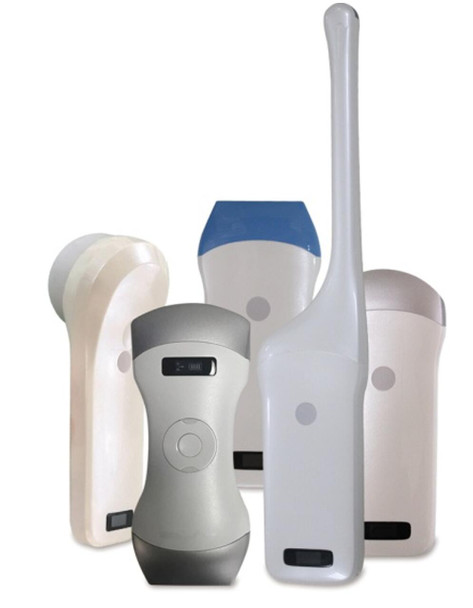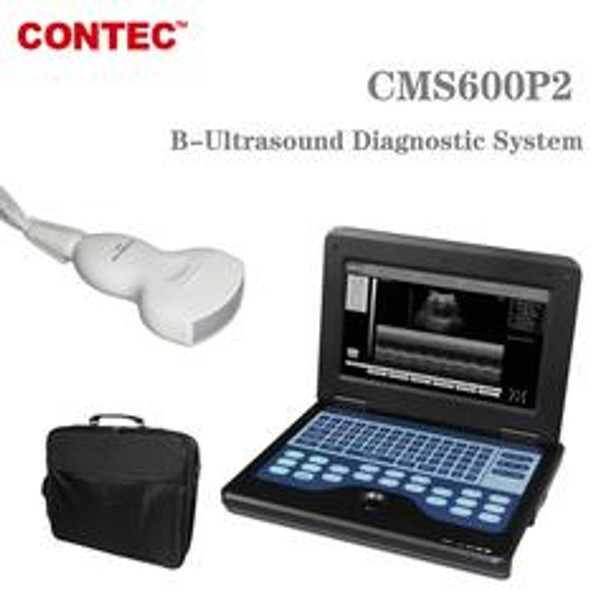Ultrasound Technology Advancements: Portable Solutions for Nigerian Medical Practitioners
Key Takeaways
- Enhanced Mobility: Portable ultrasound devices offer increased mobility and convenience, allowing medical practitioners to perform diagnostics in various settings, including remote and underserved areas.
- Improved Access to Healthcare: These devices enhance access to essential diagnostic imaging, bringing medical services directly to patients in rural or difficult-to-reach locations.
- Cost-Effectiveness: Portable ultrasound machines are generally more affordable than traditional models, with lower initial investments and reduced operational costs, making them accessible to small clinics and individual practitioners.
Introduction
Ultrasound technology has long been a vital tool in modern medicine, allowing for real-time imaging of soft tissues, organs, and blood flow within the body. Traditionally, ultrasound machines have been large, stationary devices used primarily in hospitals and specialized medical facilities.
These portable ultrasound devices are revolutionizing healthcare by providing medical practitioners with the flexibility to perform diagnostic imaging in diverse settings, from remote rural clinics to bustling urban hospitals. The compact, user-friendly nature of these portable systems allows for real-time imaging and instant analysis, improving diagnostic accuracy and patient outcomes.
Moreover, the affordability and accessibility of these devices are addressing critical gaps in medical care, enabling more widespread and efficient screenings, particularly in underserved regions. As a result, Nigerian medical practitioners are better equipped to offer timely and effective care, ultimately enhancing the overall quality of healthcare delivery across the country.
In this article, we explore the benefits of portable ultrasound devices, their applications across various medical fields, and how they are improving healthcare delivery in Nigeria, particularly in underserved and remote areas.
Ultrasound CMS600S-VET B- Contec
Benefits of Portable Ultrasound Devices
1. Mobility and Convenience
One of the most significant advantages of portable ultrasound machines is their mobility. These compact devices can be easily carried between locations, allowing healthcare providers to perform diagnostic imaging on-site in clinics, hospitals, or even rural areas where traditional ultrasound equipment may not be available. The portability of these devices enables medical practitioners to deliver essential diagnostic services in remote or under-resourced regions of Nigeria, expanding access to care for patients who might otherwise face barriers in receiving timely medical attention.
2. Improved Access to Healthcare
Portable ultrasound devices have the potential to revolutionize healthcare in Nigeria by bringing diagnostic tools to underserved populations. In many rural or hard-to-reach areas, patients often have to travel long distances to access medical facilities equipped with diagnostic equipment. Portable ultrasound machines allow doctors to conduct essential scans right where patients are, reducing travel time and making healthcare more accessible. This is especially important in maternal health, where timely fetal monitoring can be critical for preventing complications.
3. Time-Saving and Efficiency
Traditional ultrasound machines often require extensive setup and dedicated space in medical facilities. Portable ultrasound devices, on the other hand, are designed for rapid deployment, saving valuable time for healthcare providers. They are user-friendly and can be set up quickly, allowing for fast diagnosis in emergency situations. Whether it’s a trauma case, internal bleeding, or an early pregnancy complication, portable ultrasounds can provide immediate and accurate results, improving patient outcomes by enabling faster decision-making.
Applications in Various Medical Fields
1. Obstetrics and Gynecology
Portable ultrasound devices are proving to be invaluable tools in obstetrics and gynecology. These machines are used for prenatal care, helping doctors monitor fetal growth and detect any complications early in pregnancy. With portable solutions, healthcare professionals can perform scans in clinics, community health centers, or even during home visits. This is especially beneficial in rural areas where access to medical facilities may be limited, providing expectant mothers with critical monitoring without the need to travel long distances.
2. Cardiology
Portable ultrasound technology is increasingly being used in cardiology for assessing heart function. Portable echocardiography allows doctors to diagnose heart conditions such as valve abnormalities, heart failure, and congenital heart defects, even in settings that lack the infrastructure for large imaging devices. The ability to bring cardiac imaging to patients in the field or in smaller clinics can lead to earlier detection and intervention in cardiovascular diseases, a major health issue in Nigeria.
3. Emergency Medicine
In emergency situations, time is of the essence. Portable ultrasound machines are becoming essential tools in emergency medicine, allowing for quick bedside imaging to assess trauma, internal bleeding, or fractures. These devices provide real-time imaging during emergencies, helping doctors make rapid decisions about treatment, surgeries, or further diagnostics. In ambulance services, portable ultrasounds are being used to assess critical conditions on the way to hospitals, giving emergency teams valuable insights before patients even arrive.
4. Primary Care and General Practice
In family practice and general medicine, portable ultrasound devices are enabling practitioners to offer more comprehensive care. Doctors can conduct routine diagnostic imaging as part of patient checkups, identifying conditions that may not be immediately visible through a physical exam. This increased diagnostic capability enhances patient care in small clinics or mobile health units, which are often the first point of contact for patients in Nigeria’s healthcare system.
Wireless Probe Type Ultrasound Scanner
Cost-Effectiveness of Portable Ultrasound Devices
1. Lower Initial Investment
Portable ultrasound devices are generally more affordable than traditional, large-scale ultrasound machines. Their compact and streamlined design means lower production and shipping costs, making them accessible to smaller clinics and individual practitioners with limited budgets. For many healthcare providers in Nigeria, the lower initial investment in portable ultrasound technology represents a practical and economical solution to expanding diagnostic capabilities without the significant capital expenditure required for traditional systems.
2. Reduced Operational Costs
In addition to a lower initial investment, portable ultrasound machines offer reduced operational costs. These devices typically require less infrastructure and are easier to maintain compared to traditional machines, which often need specialized rooms and complex setup. Portable ultrasounds are also less dependent on high-energy power sources, making them suitable for areas with unstable electricity. Their ease of use and minimal training requirements further contribute to reduced operational costs, as they require less technical expertise to operate effectively.
3. Improved Return on Investment (ROI)
The efficiency and versatility of portable ultrasound devices contribute to a favorable return on investment. By enabling faster and more accurate diagnoses, these devices can improve patient throughput and overall clinic productivity. For medical practices, the ability to offer a wider range of diagnostic services with a single, portable device can attract more patients and enhance service offerings. The rapid deployment of portable ultrasounds also means that healthcare providers can address more cases promptly, leading to better patient outcomes and increased practice efficiency.
Key Features of Portable Ultrasound Machines
1. Advanced Imaging Capabilities
Despite their compact size, many portable ultrasound machines offer advanced imaging capabilities. These devices can produce high-quality images comparable to those from traditional machines, with features such as 3D imaging and Doppler ultrasound. The integration of advanced imaging technology in a portable format allows for detailed assessments across various medical specialties, ensuring that diagnostic accuracy is not compromised by the device’s size.
2. Battery Life and Power Efficiency
Portable ultrasound devices are designed to be power-efficient, with long-lasting batteries that support extended use in field conditions. This is particularly important in areas with unreliable power supplies or during mobile medical missions. Some models offer multiple charging options, including solar or vehicle-powered chargers, further enhancing their utility in remote or off-grid locations.
3. Wireless Connectivity and Cloud Integration
Many modern portable ultrasound machines come equipped with wireless connectivity and cloud integration. This allows for real-time data sharing with remote specialists, facilitating telemedicine consultations and collaborative care. Cloud-based storage also enables easy access to patient data and imaging results, providing a comprehensive view of a patient’s health history and improving continuity of care.
4. Durability and Versatility
Portability often requires ruggedness, and many portable ultrasound devices are built to withstand challenging environments. They are designed to be durable and versatile, able to perform reliably in various settings, from urban clinics to remote field locations. Their robust construction ensures that they can endure the rigors of frequent transportation and use in diverse medical scenarios.
Challenges of Adopting Portable Ultrasound Devices in Nigeria
Training and Skill Development
One of the main challenges in adopting portable ultrasound technology is ensuring that medical professionals are adequately trained to use the devices. Effective use of portable ultrasound machines requires specific skills and knowledge, which must be addressed through comprehensive training programs. Integrating ultrasound technology into medical education and providing ongoing training opportunities are crucial for maximizing the benefits of portable devices.
Infrastructure and Support Limitations
In many rural areas of Nigeria, the lack of reliable power sources and technical support can pose challenges for the effective use of portable ultrasound devices. Ensuring consistent power supply and access to maintenance services is essential for the successful implementation of these technologies. Developing local support networks and infrastructure to address these issues will be critical for expanding the use of portable ultrasounds.
Regulatory and Importation Hurdles
Navigating the regulatory landscape and importation processes for medical devices can be complex and costly. Portable ultrasound machines must meet local regulatory requirements, and practitioners may face logistical challenges in importing and obtaining these devices. Addressing these regulatory and logistical barriers will be important for ensuring that portable ultrasound technology is accessible and viable for healthcare providers in Nigeria.
Portable Laptop Machine Digital Ultrasound Scanner
Future of Portable Ultrasound Technology in Nigeria
1. Increasing Adoption and Use Cases
As technology continues to advance, the adoption of portable ultrasound devices in Nigeria is expected to grow. The expanding use cases for portable ultrasounds in various medical fields, combined with ongoing improvements in device capabilities, will contribute to their increased adoption. Portable ultrasound technology is likely to become a standard tool in both urban and rural healthcare settings, improving access to diagnostic imaging and enhancing patient care.
2. Expanding Healthcare Access
The potential of portable ultrasound technology to improve healthcare access in Nigeria is significant. By addressing gaps in diagnostic imaging and enabling more widespread use of ultrasound, these devices can help bridge the healthcare divide between urban and rural areas. Expanding the availability of portable ultrasounds will contribute to better health outcomes and increased access to quality medical care across the country.
Frequently Asked Questions
1. What are the key advantages of portable ultrasound devices compared to traditional models?
Portable ultrasound devices offer several advantages, including mobility, ease of use, and lower costs. They are compact and can be used in various settings, from remote areas to emergency situations, making them more accessible compared to traditional, stationary machines.
2. How do portable ultrasound machines perform in terms of image quality?
Many portable ultrasound machines provide high-quality imaging comparable to traditional models. They are equipped with advanced imaging technologies, such as 3D and Doppler capabilities, ensuring detailed and accurate diagnostic results despite their compact size.
3. Are portable ultrasound machines affordable for small clinics in Nigeria?
Yes, portable ultrasound machines are generally more affordable than traditional systems. Their lower initial investment and reduced operational costs make them a practical option for small clinics and practitioners with limited budgets.
4. Can portable ultrasound devices be used for all types of diagnostic imaging?
Portable ultrasound devices are versatile and can be used for a range of diagnostic imaging applications, including obstetrics, cardiology, emergency medicine, and general practice. However, the suitability of a portable device may vary depending on the specific imaging requirements and advanced features needed.
5. What kind of training is required to operate a portable ultrasound machine effectively?
Operating a portable ultrasound machine requires basic training in ultrasound techniques and device operation. Many manufacturers provide training resources and support to ensure healthcare professionals can use the devices effectively. Comprehensive training programs and ongoing education are important for maximizing the benefits of portable ultrasound technology.
AR-580C 4D image Portable Color Doppler Ultrasound Scanner
Other Related Articles
The Latest Trends in Medical Devices and Technology: What You Need to Know
Conclusion
Portable ultrasound technology represents a transformative advancement in diagnostic imaging, offering numerous benefits for Nigerian medical practitioners. These devices enhance healthcare accessibility by providing mobility, convenience, and cost-effectiveness, making them suitable for use in both urban and rural settings. The ability to perform real-time diagnostics in a variety of medical fields, from obstetrics to emergency medicine, underscores the value of portable ultrasounds in improving patient care. Despite challenges related to training, infrastructure, and regulatory issues, the future of portable ultrasound technology in Nigeria looks promising, with increasing adoption likely to enhance healthcare delivery and access across the country.
For reliable and cutting-edge portable ultrasound devices, visit GZ Industrial Supplies. Whether you're looking to enhance diagnostic capabilities in your clinic or expand healthcare services in remote areas, GZ Industrial Supplies offers a range of high-quality ultrasound solutions to meet your needs. Explore our selection and invest in the future of medical imaging today!
Recent Posts
-
Why Use Distilled Water For Inverter Battery
Introduction Inverter batteries are essential for uninterrupted power supply, especially in are …Apr 01, 2025 -
Industrial Drilling Machines: Boosting Productivity and Efficiency
Key Takeaway Industrial drilling machines are indispensable power tools that significantly enha …Mar 31, 2025 -
Top Selling Magnetic Drilling Machines in Nigeria
Magnetic Drilling Machine is a portable drilling machine with a magnetic base (either electroma …Mar 31, 2025










